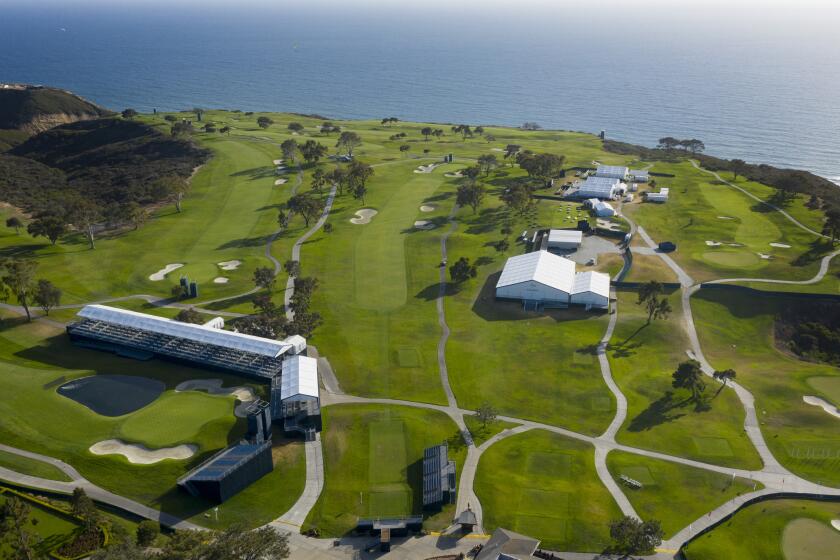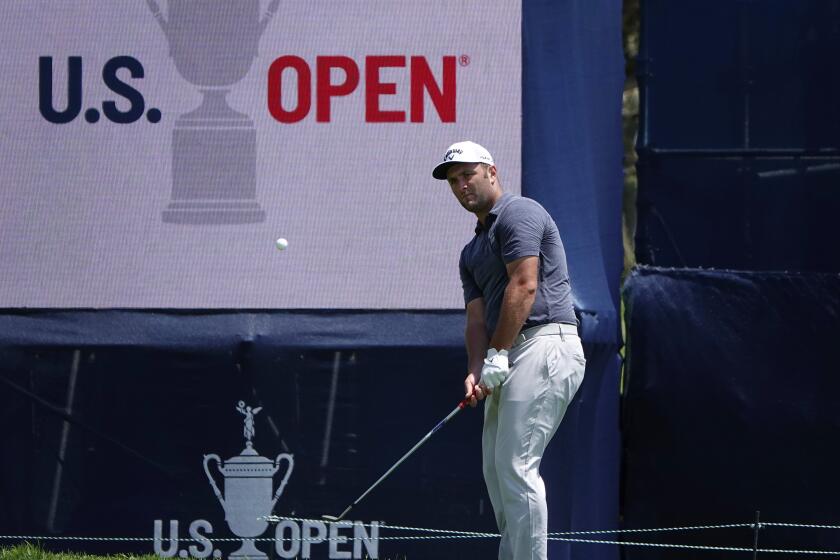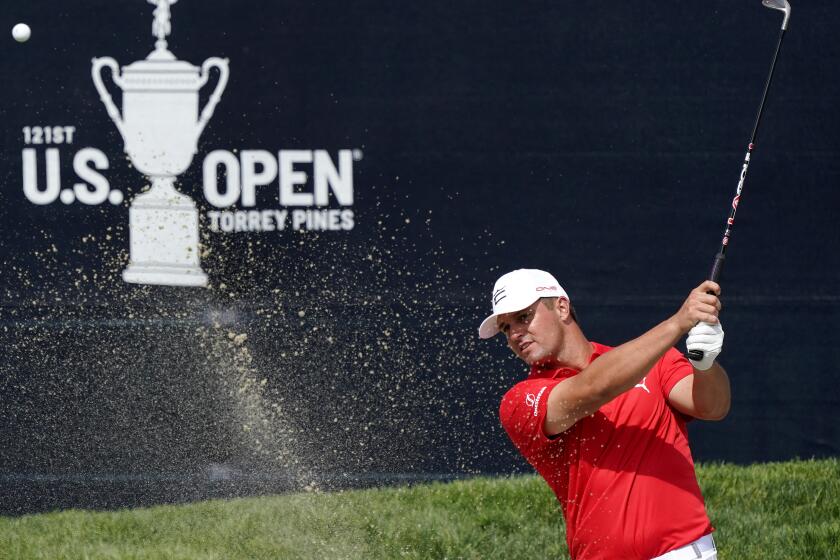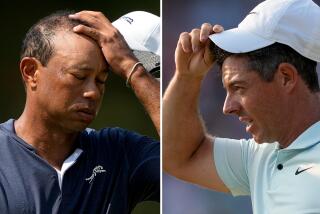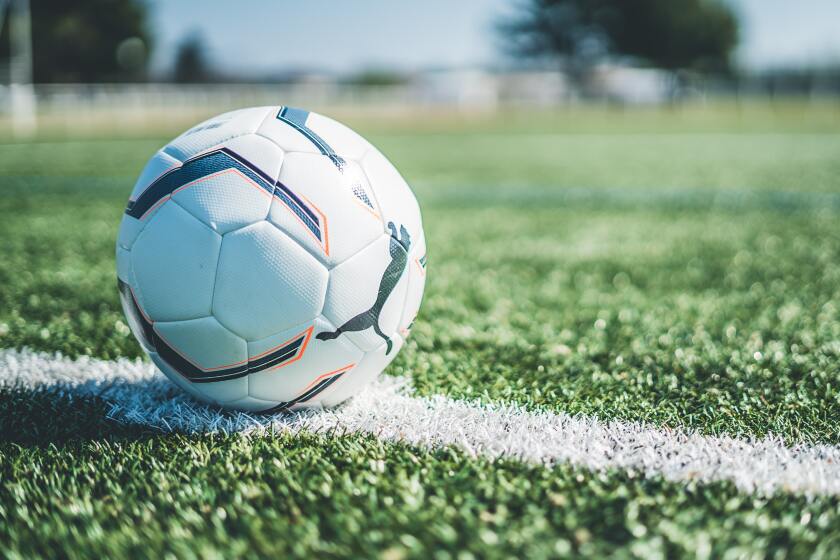How drones will help capture every angle of the U.S. Open at Torrey Pines
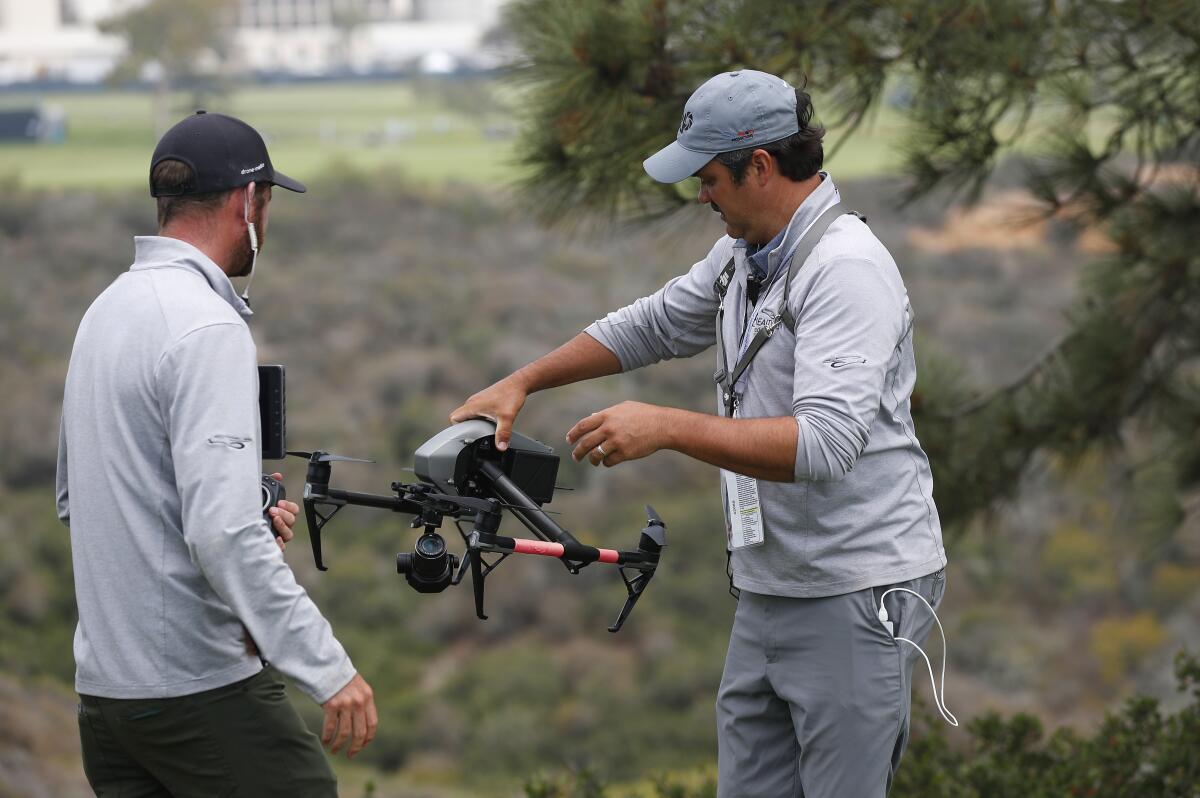
- Share via
SAN DIEGO — The natural beauty of Torrey Pines will be on display at the U.S. Open this week, as NBC’s drone cameras dip, dive and hover over the cliffs of La Jolla, capturing the world’s best golfers from a God’s-eye vantage.
The network practiced those angles Wednesday, with two operators — one steering the drone, one directing the attached camera — standing above the No. 3 tee and flying the device west until it was a mere speck over the Pacific.
“Pebble Beach and places like that are amazing, but this is going to be spectacular,” said NBC’s Joe Martin, directing the coverage. “With some of the history of aviation here in San Diego, I know that [Charles] Lindbergh assembled the `Spirit of St. Louis here, so it’s kind of cool to tie it all together.”
In terms of cameras — and more than 100 of them will be used in the U.S. Open broadcast — a lot of the innovations are at ground level. Those will be used to follow a tournament overflowing with story lines, among them 51-year-old Phil Mickelson, a six-time U.S. Open runner-up, trying to collect his first victory in the event (and a career grand slam) in his hometown. There’s also the ongoing friction between Brooks Koepka and Bryson DeChambeau, whose ongoing feud is on public display. The cameras will be trained on all of that, beginning with the first round Thursday.
Normally par 72, Torrey Pines South will play to par 71 at the U.S. Open this week. Only Tiger Woods and Rocco Mediate were under par in 2008.
On the first hole, NBC will use a “scorpion crane,” positioned between the tee and the landing area. It will track the flight of the ball whipping past, providing a preview of what the next shot will look like. The crane then will be moved to No. 18 to track approach shots.
Then, there are so-called rat cameras, souped-up golf carts fitted with cameras on the back to follow struck tee shots.
“If you remember the old TV show from years ago called `’Rat Patrol,’ it’s what inspired the name,” said Tommy Roy, the network’s lead golf producer. “It was a show about these Army guys that rode around in Jeeps and had machine guns on the back of them, and that’s basically what these vehicles look like.”
At the pond at 18 is the “frog cam,” which is on the bank and ideally positioned to capture errant golf shots that, either in flight or rolling back off the green, wind up in the water.
Particularly intriguing is the “4D Replay” on the tee box of the sixth hole. That’s a semicircle of 88 cameras in which NBC can capture a swing from virtually every angle in Matrix-like fashion. The network used the technology this month at the U.S. Women’s Open.
“The angle that you get to see the swing from, we can control it,” Roy said. “That’s why around the guy behind him, around to the front, freeze it wherever we want. So it’s a really good tool for [analyst] Paul [Azinger] to analyze these swings, and I can’t wait to see what DeChambeau’s swing’s going to look like there. So that’s why you required all those there. And thankfully, the USGA was very kind about allowing us to put that there.”
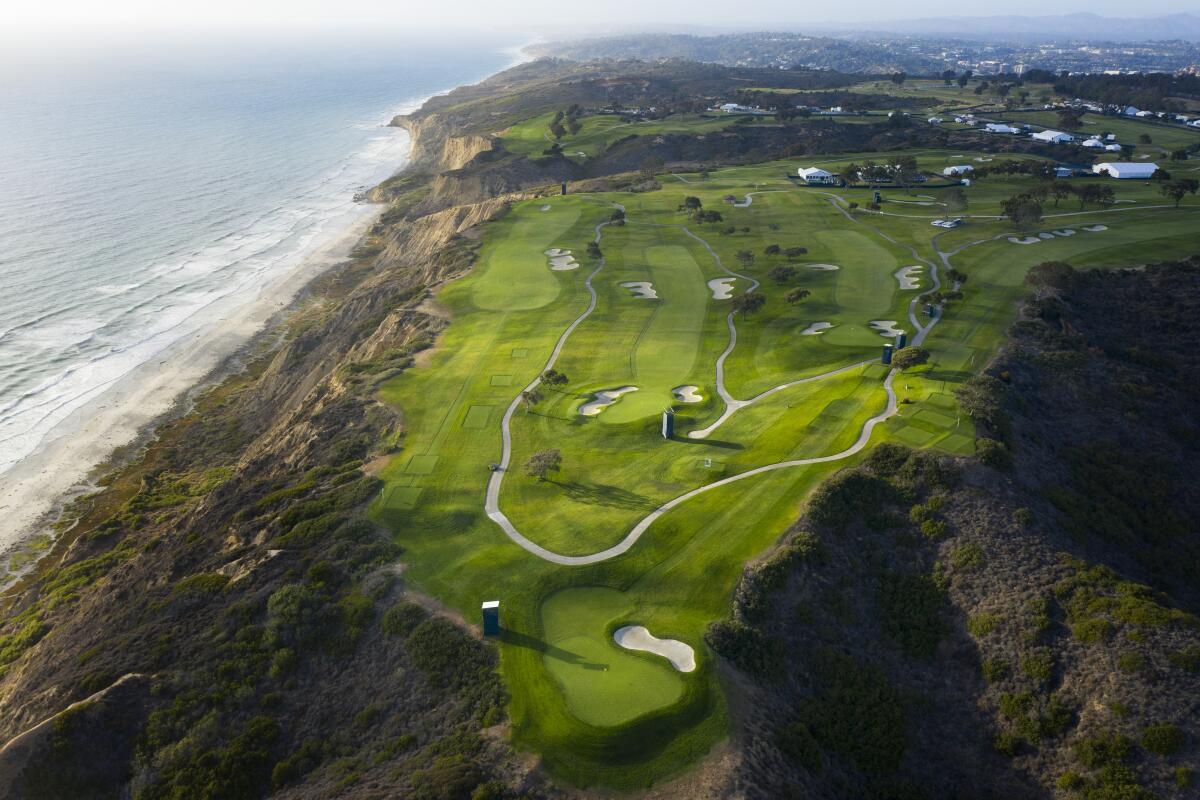
Over the past decade, the whirring drones have provided a new view of the game, gliding inches above the ground at times and rising as high as 400 feet at others. They don’t conflict with the fighter jets that hug the coastline and scream over the golf course, as those fly at least 1,000 feet higher, nor do they seem to bother the players. Much.
“Honestly, I don’t really notice them,” said Dustin Johnson, ranked No. 1 in the world. “I mean, you hear them sometimes, you might look at them, but obviously the guys know what they’re doing. So they stay out of your way.”
Occasionally, however, they can be a distraction. During the third round of the PGA Championship last month, eventual winner Mickelson lined up a 187-yard approach on the fourth hole at Kiawah Island and was irritated that a CBS drone had entered his planned airspace.
“Can we remove that drone from my flight,” he said to no one in particular, stepping away from his shot. “Are you serious?”
Jon Rahm acknowledges he was vaccinated but hadn’t cleared the 14-day window before he tested positive at the Memorial Tournament this month.
For the most part, the drones stay safely out of the way, typically behind the golfers. They are capable of zipping along at 55 mph, and, for safety reasons, aren’t flown over the gallery. It can be a tricky proposition, especially with heavy traffic among competitors, because getting out of the way of one golfer might be getting directly in the way of someone else.
“We have a lot more leeway on Saturday and Sunday, when the field has been narrowed down,” Martin said. “Then we can follow behind groups, over the actual golf course where nobody is standing.”
Ben McClung, who pilots drones as a third-party vendor, played golf for seven years as a professional on smaller tours, said his knowledge of the game helps him in his current job.
“I would probably say I’m a golfer first and then fell into this and learned this opportunity,” he said. “So being able to play, and then kind of know the emotions they’re going through, and also being inside the ropes and seeing what they’re trying to look at has been a natural progression to try to replicate that view through the use of our cameras.”
Jon Rahm, Dustin Johnson, Brooks Koepka, Bryson DeChambeau and Xander Schauffele are among the top players to watch at the U.S. Open this week.
Johnson understands the challenge of flying drones. He has a couple.
“I’ve flown a few of them, and they crash,” he said. “Yeah, I need — I tried flying them at the house where there’s a lot of trees, and there’s not a whole lot of room to land them and take off. So I need to go and practice in an open field.”
It’s no surprise, then, where his mostly stay.
“They sit in the box,” he said.
More to Read
Go beyond the scoreboard
Get the latest on L.A.'s teams in the daily Sports Report newsletter.
You may occasionally receive promotional content from the Los Angeles Times.

